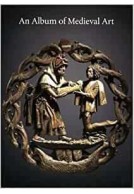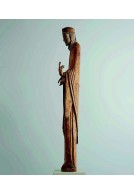Pages Of The Qur'An (Paperback)
The Lygo Collection
(click here for international delivery rates)
Order within the next 9 hours, 6 minutes to get your order processed the next working day!
Need a currency converter? Check XE.com for live rates
The Lygo Collection of Qur’an manuscripts, which date from around a century after the Prophet Muhammad’s death in 632 CE to the middle of the 16th century, includes pages from some of the most celebrated manuscripts of the period as well as lesser-known ones, and provide a comprehensive overview of stylistic developments in Qur’anic calligraphy and illumination. During the period represented by this outstanding collection, the scriptsand formats used for copying and illuminating the Holy Word multiplied and developed – visual testimony to the extraordinary exchange of ideas that took place under the ’Abbasid dynasty, which stretched at its height from the Atlantic to the borders of China.
The consistent esteem in which the art of the calligrapher was held across the Islamic world reflected the status of the Qur’an as the unmediated word of Allah and its centrality to the notions of Islamic culture and identity. As the most continuously copied text in the Islamic world the Qur’an is one of the best prisms through which to view changes in calligraphy and manuscript production – a survey of which is given in an introductory essay. Accompanying beautiful reproductions of each of the 73 objects in the collection are detailed descriptions in which the characteristic of the script and design as well as the history of each manuscript is considered. Important early examples in the Lygo Collection include a folio from a famous late 8th-century Qur’an writtenentirelyin gold Kufi script, every page of which is framed by an illuminated border, and a leaf from the Blue Qur’an – one of the most famous and luxurious Kufi Qur’an manuscripts, written in gold on blue parchment, dating to the 9th or 10th century. The preeminence of the early Kufi scripts was challenged in the 11th century by various cursive scripts and there was a concurrent change from papyrus to paper and from a landscape to an upright format for many copies of the Qur’an. A highly decorated leaf in the Lygo collection is from an 11th-or 12th century manuscript considered to be one of the masterpieces of Qur’anic calligraphy and illumination and is thought to have stretched over 2,250 leaves in total. New heights in calligraphy and illumination were reached under Mongol rule – a period of artistic brilliance and innovation– and the monumentality in Qur’an production by the Mamluk and Timurid dynasties can be seen as an artistic response to the Mongol challenge. A large fragment in the Lygo collection comes from a magnificent Qur’an of extraordinary dimensions thought to be made for Timur, the founder of the Timurid Empire.














